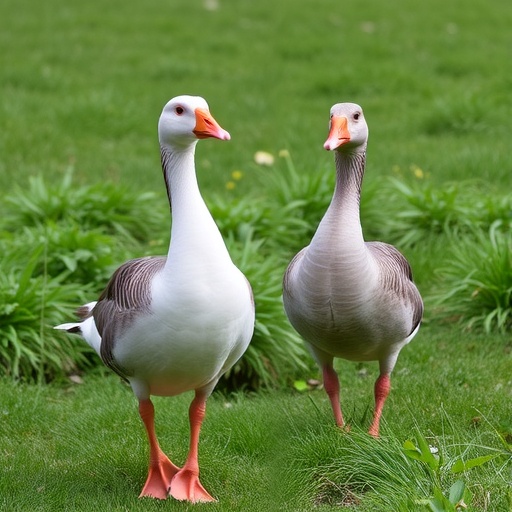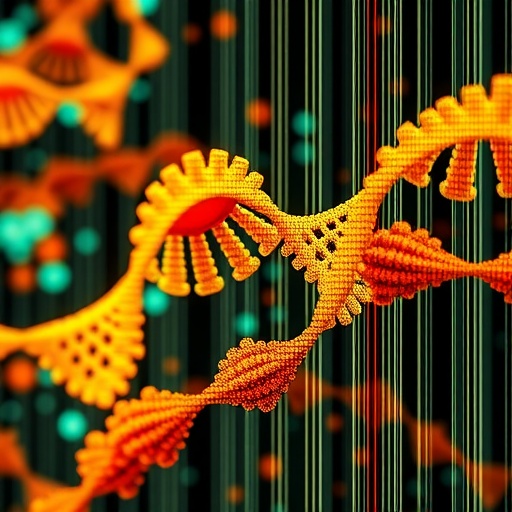
In a groundbreaking investigation published in Frontiers in Zoology, researchers N. Hookabe, R. Ueshima, and T. Miura have unveiled critical insights into the postembryonic development and lifestyle shifts of the commensal ribbon worm. This study presents an in-depth analysis that unpacks the life cycle of these enigmatic organisms, revealing mechanisms behind their transformation and adaptation in relation to environmental variables. As ecosystems continue to face change, understanding how these worms adjust could hold implications for broader ecological stability.
Commensal ribbon worms, known for their slender bodies and often vibrant colors, interact with a variety of host species, contributing to the ecological tapestry of marine and freshwater environments. The term “commensal” indicates a unique relationship wherein these organisms benefit from their hosts without causing harm. Investigating their development stages offers an unprecedented opportunity to comprehend how they navigate the challenges posed by their environments.
The researchers conducted comprehensive observational studies focusing on ideal habitats, coupled with laboratory experiments that charted the growth and morphological changes over time. By documenting these transformations, Hookabe, Ueshima, and Miura have provided vital evidence linking environmental conditions to developmental trajectories. Their findings suggest that shifts in temperature, salinity, and available resources can accelerate or impede growth, highlighting the adaptability and resilience of these organisms.
The methodology employed in this research is particularly noteworthy. A combination of field sampling, high-resolution imaging, and genetic analysis allowed the team to capture an unprecedented level of detail about the ribbon worms’ postembryonic stages. This multi-faceted approach ensured that the scope of the study encompassed not just the biological variables at play, but also how changes in the environment can influence behavior and physiology over time.
One of the most significant findings of this study is the identification of distinct phases in the ribbon worm’s life cycle. The researchers categorized these stages based on morphological characteristics and sizes, revealing that the transition from juvenile to adult forms is influenced by factors such as nutrient availability and competition with neighboring species. This underscores the importance of environmental context in dictating the trajectory of development, a finding that has implications for conservation efforts and ecosystem management.
Furthermore, the study delves into the behavioral adaptations of these worms as they mature. Interestingly, the analysis revealed that juvenile worms exhibited a different foraging strategy compared to adults, suggesting that their lifestyle shifts are not merely physical but also involve changes in feeding habits and habitat selection. This behavioral plasticity is essential for survival, particularly in changing ecosystems where food sources may fluctuate.
In terms of ecological interactions, the surprising versatility of ribbon worms was also highlighted in this research. These organisms not only cohabitate with multiple host species but also display a remarkable ability to manipulate their hosts’ behavior, ensuring a steady supply of nutrients. The implication here is profound: as marine ecosystems continue to evolve, understanding these complex relationships will be vital for predicting the ripple effects on biodiversity and ecosystem services.
Moreover, the researchers underscore the importance of this study in the context of climate change. As temperatures rise and ocean conditions shift, the ability of ribbon worms to adapt becomes increasingly crucial. The documented lifestyle shifts may represent an evolutionary response to environmental stressors, indicating that these organisms could serve as indicators of ecosystem health. The findings call for a broader examination of such commensal relationships across other species, fostering a comprehensive understanding of ecological dynamics.
The comprehensive nature of this research is further bolstered by its multidisciplinary approach, combining field ecology, developmental biology, and evolutionary theory. By weaving together these perspectives, the authors put forth a compelling narrative of how one species adapts within a larger ecological framework. Their work acts as a steppingstone for future studies aiming to delve deeper into the evolutionary biology of commensal organisms, facilitating the understanding of their roles in broader environmental contexts.
In sum, the research of Hookabe, Ueshima, and Miura goes beyond unraveling the life cycle of commensal ribbon worms; it poses critical questions about adaptability, resilience, and the interconnectedness of life in uncertain environments. This study not only contributes to the academic conversation but invites a broader audience to consider the implications of ecological research on everyday lives, especially as global changes unfold in real-time.
As scientists continue to explore these intricate relationships at the intersection of biology and ecology, it becomes essential to recognize the pivotal roles these organisms play. The future of our ecosystems may depend on understanding and conserving such species that contribute to the fabric of life beneath the surface of our water bodies. This research is just one of many that illuminate the complexities of life in our oceans and rivers, emphasizing the need for continued exploration and protection of biodiversity.
In conclusion, the postembryonic development and lifestyle shifts in commensal ribbon worms revealed by this study are only the tip of the iceberg. The insights gleaned from Hookabe, Ueshima, and Miura’s research not only enrich our understanding of these creatures but also serve as a reminder of the intricate web of life and the importance of preserving the delicate balances that exist within our ecosystems. As we face an uncertain climatic future, such studies will be crucial in framing our approaches to biodiversity conservation and ecosystem management.
Subject of Research: Postembryonic development and lifestyle shift in commensal ribbon worms
Article Title: Postembryonic development and lifestyle shift in the commensal ribbon worm
Article References:
Hookabe, N., Ueshima, R. & Miura, T. Postembryonic development and lifestyle shift in the commensal ribbon worm.
Front Zool 21, 13 (2024). https://doi.org/10.1186/s12983-024-00533-3
Image Credits: AI Generated
DOI: 10.1186/s12983-024-00533-3
Keywords: Commensal ribbon worms, postembryonic development, lifestyle shifts, ecological interactions, environmental adaptation.
Tags: commensal organism adaptationsecological implications of ribbon wormsecological stability and ribbon wormsenvironmental influence on worm growthmarine and freshwater ecosystemsmorphological changes in ribbon wormspostembryonic development in ribbon wormsrelationship between hosts and ribbon wormsresearch on ribbon worm life cyclesribbon worm development stagessalinity impact on ribbon worm growthtemperature effects on worm development




